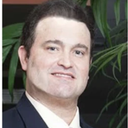Posted underBreast Fat Transfer q&a
After fat transfer, will I be left with loose skin to the area that the fat has been removed?
I am thinking of having my old implants removed and replacing them with a fat transfer and an uplift but I am a little worried that the areas that the fat is removed from will be losse skin, after.
Answers (4)
From board-certified doctors and trusted medical professionals
More Breast Fat Transfer Questions
See all Breast Fat Transfer Q&AWE SEND PRETTY
EMAILS
What’s trending? Who’s turning heads? Which TikTok myths need busting? We’ve got you. No fluff, no gatekeeping—just real talk. Get our free, unfiltered newsletter.
